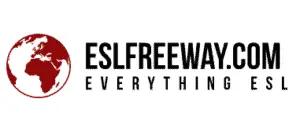Coming up with online speaking activities for ESL students might seem like a challenge, however, a lot of the old classic classroom based speaking activities can be successfully moved to online conversation classes with a little thought.
Puppet Shows
This is just a fun way of getting students talking, especially for those that are often too shy to speak normally. There is something about putting a hand puppet on and showing it in front of the computer rather than your face it seems to lift the veil of shyness.
You can give students a situation and then ask them to create a dialogue between their two hand puppets, or with a partner across Zoom breakout rooms.
Support: Get students to rearrange a dialogue first either as a group, or individually. Then have students read out the dialogue between their own hand puppets. Then set a situation that is similar to the first one so they can use the first dialogue as a model for the text.
Here is a nice wikihow on making sock puppets that students can use.

What Happens Next?
Select some interesting pictures displaying odd or strange situations, good or bad. Screen share them with students. Give them time to figure out what they think has happened just before the picture and what will happen subsequently.
You can then have students discuss either in pairs or as a whole class what they think happened and you can award points for the most realistic, creative, or funny.
This can act as a free talking fluency practise exercise or you can drill down on some grammar with grammatical forms. Some that would work well are: ‘must have’, if/would (3rd conditional), present perfect continuous and simple, future simple. All could be used easily to talk about the situation.
At this point you might also want to check out: How To Make My Students Speak English, here.
Picture That Story
Another easy way to use images. Select ten images and tell the students a story using all of the pictures. Examine the pictures again with the students and brainstorm all the verbs that could be used in relation to those pictures.
Revise the past tense form of each verb before allowing the students either individually, or as a group to come up with a story involving all of the pictures. This is a great way to practice past tenses.
You could also allow students to change three of the pictures themselves through google images to add their own twist to the story.
You might like: 15 Research Projects For ESL Students
Explain That Diagram
For higher level students or for those more academically minded try getting students to explain a technical diagram. Google ‘IELTS academic writing task 1’ to find some suitable diagrams to use, like the one above. This is good for practising the passive voice, and technical vocabulary.

Literally, breaking down how you would explain each phase of a process and getting students to fit it all together is a great way of getting students engaged when the diagram is linked to something they have a real interest in.
Here’s a few diagrams to get started with.
Storyboards
Storyboardthat.com is a great way to get students to plan out stories which students can then share with the class, or yourself. They can bring their story to life with characters and props which they can easily move onto their storyboard.
Students can get quite involved in this and it is a little more hands on than using the pictures approach outlined above. I tend to give students a title to make a story for which tends to give them a focus to have a go at. Something quite general works well, for example: The Spooky Castle.
Make sure to outline what a story should contain though: a setting, a problem, a solution, and an ending and then see what students can come up with.
You might also like: 15 Research Projects For ESL Students
Online ESL Battleships
Copy a battleships board on to a google doc and ask students to make their own copy. You could use this one pictured.

The reason for putting the vowels and the numbers 14, 40, 15, 50 etc is that they are letters and numbers that students often struggle with. These can be altered to whatever you want to practise though.
Write ten words in the chat box that you would like your group to practise. Tell the students to write the words anywhere they want on the grid.
Students work in pairs in zoom rooms, and ask questions to find your partner’s words location. E.g. ‘Is there anything in E, 40?’ If there is, they get a ‘hit’ and ask their partner what word they found. If there was nothing in that square they get a ‘miss’ and carry on.
When students hit the words they have to spell the word out and give a definition and use it in a sentence, in order to get the point.
The first student to hit all ten words is the champion. You might also be interested in reading some shortcuts to getting your students to speak fluently, here: How To Make Your Students Speak Fluently.
Online ESL Jigsaw Activity
This is quite a nice way of engaging students in all four skills with a focus on speaking and listening. Simply select an online article on a topic of interest to your students. Use an online snipping tool and, or copy and paste different paragraphs on to separate google docs.
Each student receives one of the paragraphs and this is a great way to differentiate; give the more detailed and complex paragraphs to higher level students and shorter less complex paragraphs to lower level students.
Ask the students to read their paragraph carefully and summarise the main points of the paragraph into two or three bullet points.
Students do this part individually. After they have done this they then need to use zoom breakout rooms to work in pairs to explain their paragraph to their partner which makes a note of those points as well.
Students then change partners which you may have to orchestrate in break out rooms, or you can do this in smaller groups of 4 or 5 who take turns to read their summary in their breakout room.
By the end everyone should have summary notes of each of the different paragraphs. Afterwards you can follow up with some group discussion depending on what the article is about..
Show And Tell
Really nice and easy one here which works well for all ages. Simply ask students to display on the screen an item that has some deep meaning to them. Of course, they will have to explain why it has deep meaning to them including any stories and they will also need to answer any questions about the object.
For example, I display my green rucksack which I have had for 20 years. It is the rucksack I bought for my first around the world trip and went with me to some fascinating places like Everert base camp, Angkor Wat in Cambodia and many other places besides.
I talk about all these places and some stories related to these places.
Students then go away and find their objects to display to the group. You can give it a theme if you like, such as, show us something that brings back childhood memories, something that makes you feel lucky, something spooky or something that makes you angry and so on.

ESL Online Conversation Questions
This is straight up the easiest way to get through a conversation class. A simple list of questions to ask your partner about. Now, this might sound terrifyingly boring to you, or I, however, when you are the student it is not boring at all.
It requires a lot of concentration and focus to think and speak continually in English for the entire length of an online conversation class. So, don’t dismiss this as too simple, especially for more capable students as they often really enjoy this opportunity for free chat as long as you are considerate with your choice of topics.
Here is one place to get decent lists, esldiscussions.com
ESL Debates
Another oldie but a goodie. Pick a few recent and relevant debate topics matched to the student’s interests. Demonstrate the type of language required first and maybe have it up on the screen so students can refer to them throughout.
Give students time to think about the topic and prepare the points they want to state in favour of their position but importantly, make sure they think ahead to what argument their opponents might make and
ESL A-B Gap Fill
Another nice easy one here. Take two copies of an article that interests your students and remove keywords from the article, things like place names, dates, people’s names, and other such details.
Remove these words from even number paragraphs from one copy and remove from odd number paragraphs in the other copy.
Handout the articles to partners. You can do this via google docs and google classroom, word, or however is easiest for you. Personally I create a partner A and partner B google doc and ask students to make a copy of their assigned role: A, or B.
Give students some time to figure out what questions they need to ask their partner in order to fill in the blanks correctly.
Teachthis.com often has these premade for you but you will have to browse around a little.
Online ESL Exam Preparation Material
A lot of students have the goal of achieving a certain level in a specific speaking exam, for example, IELTS and TOEFL. These are extremely popular exams and there is a lot of preparation material for free out there that can be used in conversation lessons.
I particularly like using IELTS speaking task 2 and 3 materials to get students talking.
IELTS speaking part 2 is where students have to speak about a given topic for 2 minus on their own. They get one minute to prepare some notes to talk from and then they get to string their ideas together as fluently as they can.
You can easily then provide feedback to them using the IELTS speaking band criteria and this will give you lots of areas to help your student(s) improve.
IELTS speaking part 3 is a discussion exercise where students are encouraged to explain their thoughts at length as regards some more abstract concepts in a general nature.
There are lots of topics you can speak to students about and you can even take a look at some YouTube videos to see how IELTS tests are actually conducted to help prepare your students better.
The Cambridge English IGCSE ESL also provides some really well put together conversation questions to work through with students as well. Again the marking criteria is available to provide feedback to students and to monitor progress.

ESL News Reporter Activities
Students can either individually or in a small group present a news show. You can assign roles of news presenter, roving reporter, and eye witness. You can give students a category to report on. Something like: crime, natural disaster, cheating, or finance seems to work well.
Students then come up with the specific situation and make up the details and present a news show based on it. Normally, I get them to watch a news show first as an example and break down the structure of the show and the language to use to give the students a format t follow.
Make sure every student has a decent role assigned to them and make the rule that everyone must be speaking somewhat equally.
Movie/Book Reviews
Get students to give reviews of books or movies they have watched recently or been assigned. Play a Youtube video of a movie/book review and draw students attention to the review structure, and language of reviews that you would like them to use.
Give students a certain amount of time to put something together.
Ideally, you can work individually with students before they present it to the group, or you can have students create an actual video that other students can watch later.
Making a video is my personal favorite because it forces students to record themselves, watch how they speak, try and improve it and edit it continually until it is the way they want it.
You could use this review here of Kung Fu Panda but you might need to slow down the speed.
ESL Alibi Activity
Tell students that an evil crime occurred last night. Someone entered the school illegally by breaking a window and wrote something dreadful on the board.
Tell the students they are prime suspects and that they have to agree with a partner what their alibi is, i.e. what were they doing last night. Give students ten minutes to agree on their story/alibi before they are interrogated.
Give students ten minutes to flesh out their alibis and make sure their stories match.
Pairs are separated and each person is interviewed individually and their partner is interviewed immediately afterwards. The interviewers/police are looking for inconsistencies between their stories. This can be anything from where they went, what they ate, what time they left and so on.
Afterwards, police can interview other pairs and they have to decide which pair are the guilty pair with the most inconsistent story. Of course, there is a bit of work to do here with zoom breakout rooms again but it is well worth it and students can really involved in this one.
You might also want to read another popular article called How To Make ESL Lessons Interesting, here.

